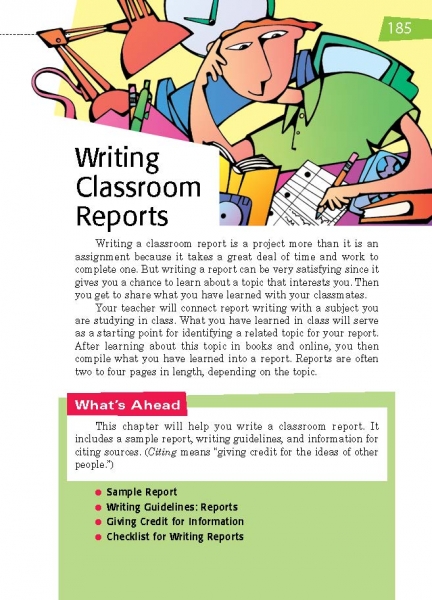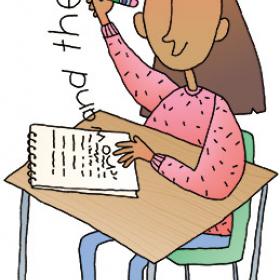Page 185 from

Start-Up Activity
Ask students about their experience with writing reports. Did they enjoy the experience? Did they learn a lot of new information about their topic? For those students who answer no, find out why. Perhaps they did not select their topics carefully enough or were not given a choice in the matter. Stress the importance of choosing a topic that truly interests them. Demonstrate “Using the Basics of Life Checklist” on page 27 to generate interesting topics. Also refer to the topics on page 28. Then read aloud and discuss page 185.
Think About It
“A writer writes with information, and if there is no information there will be no effective writing.”
—Donald Murray

Start-Up Activity
Ask students about their experience with writing reports. Did they enjoy the experience? Did they learn a lot of new information about their topic? For those students who answer no, find out why. Perhaps they did not select their topics carefully enough or were not given a choice in the matter. Stress the importance of choosing a topic that truly interests them. Demonstrate “Using the Basics of Life Checklist” on page 27 to generate interesting topics. Also refer to the topics on page 28. Then read aloud and discuss page 185.
Think About It
“A writer writes with information, and if there is no information there will be no effective writing.”
—Donald Murray


